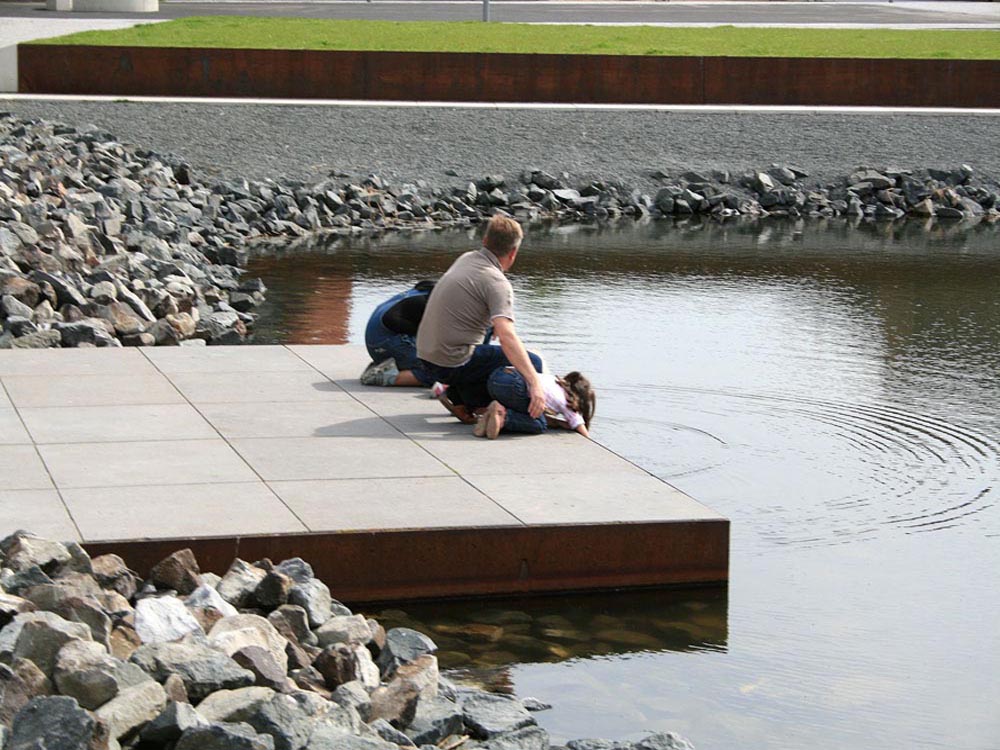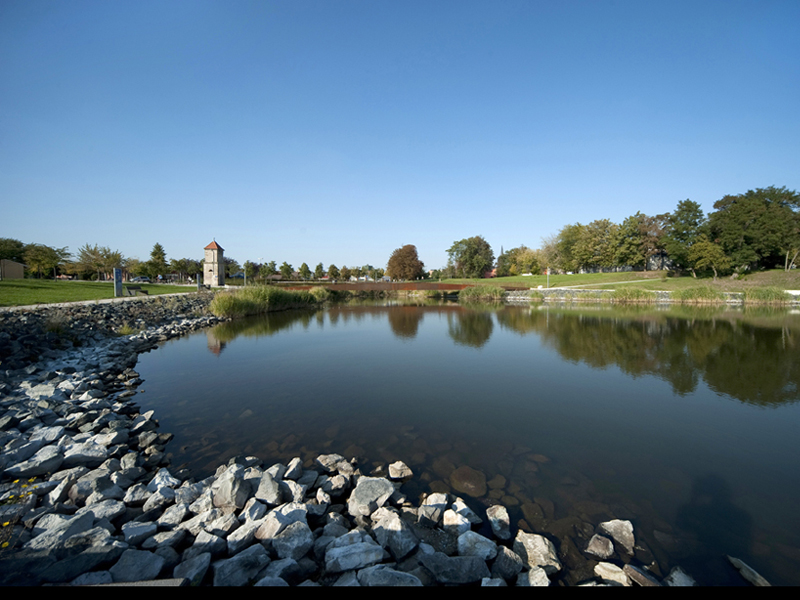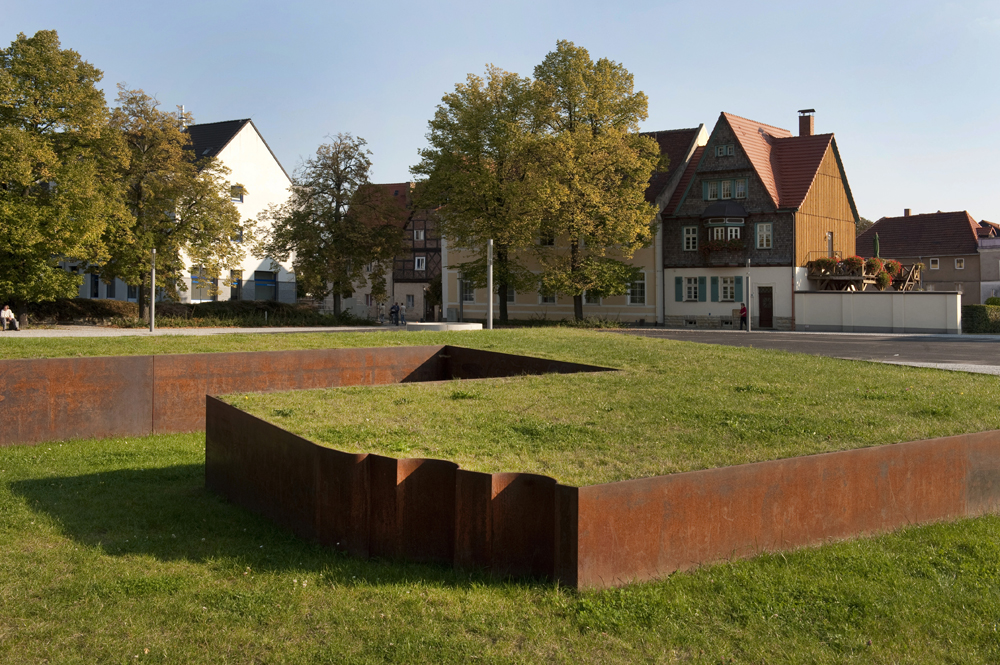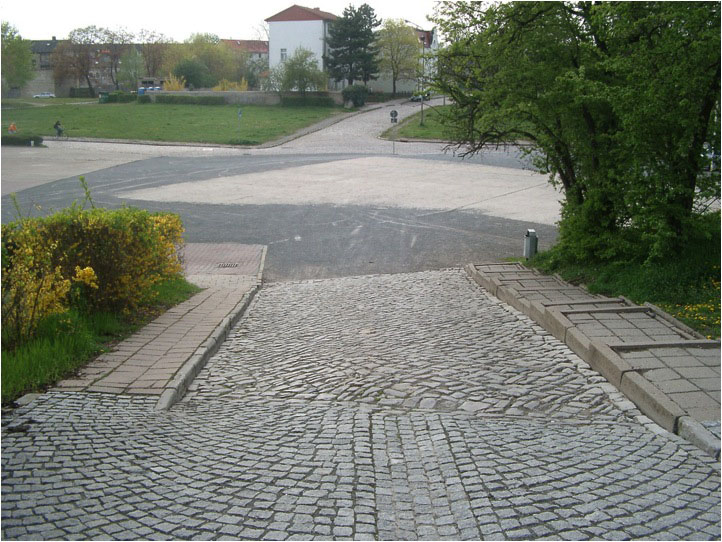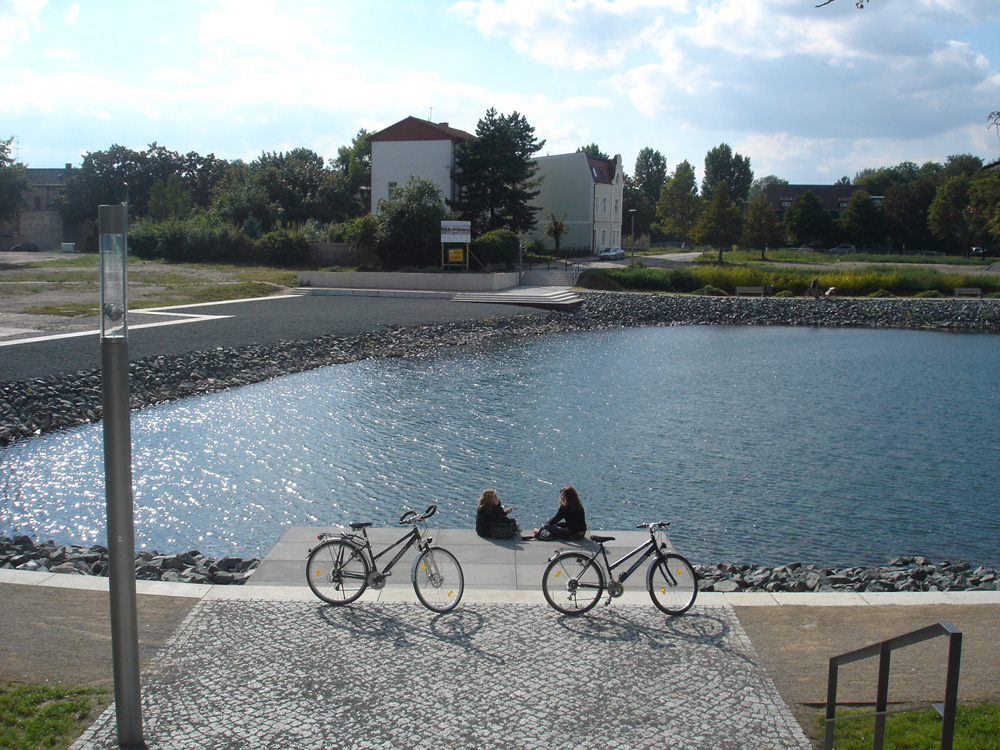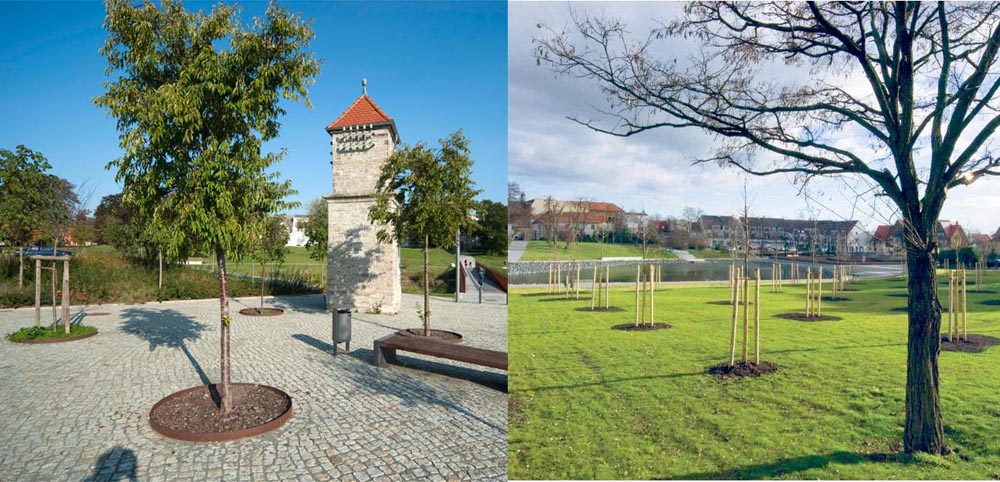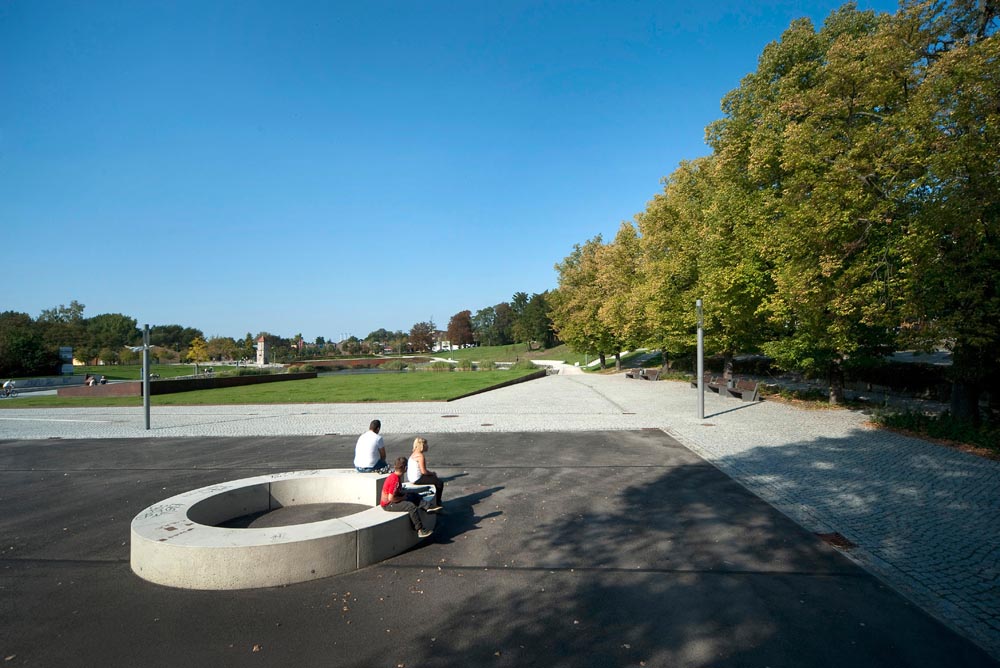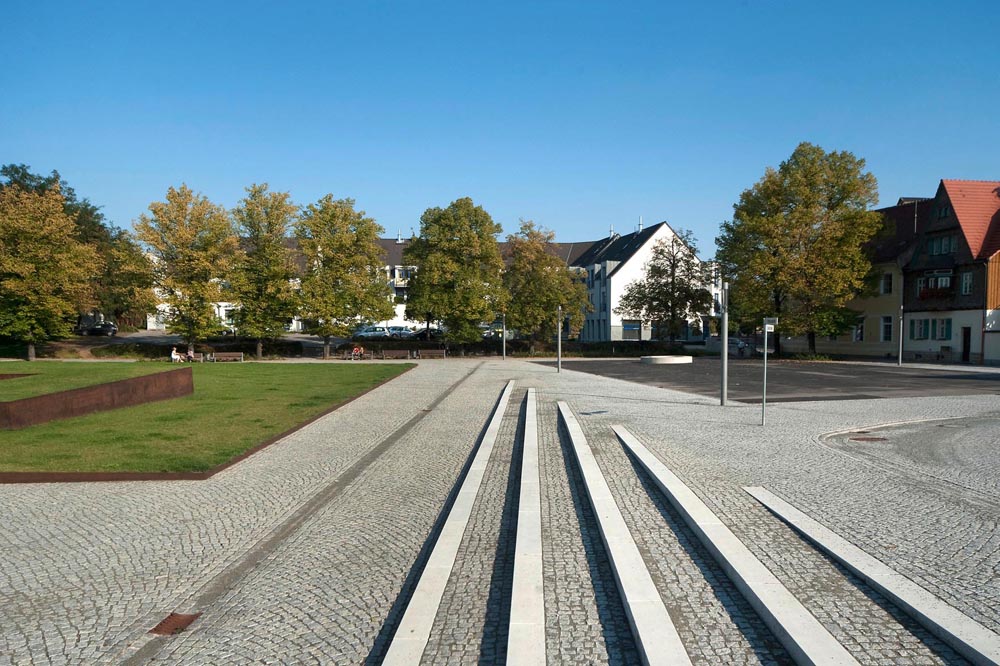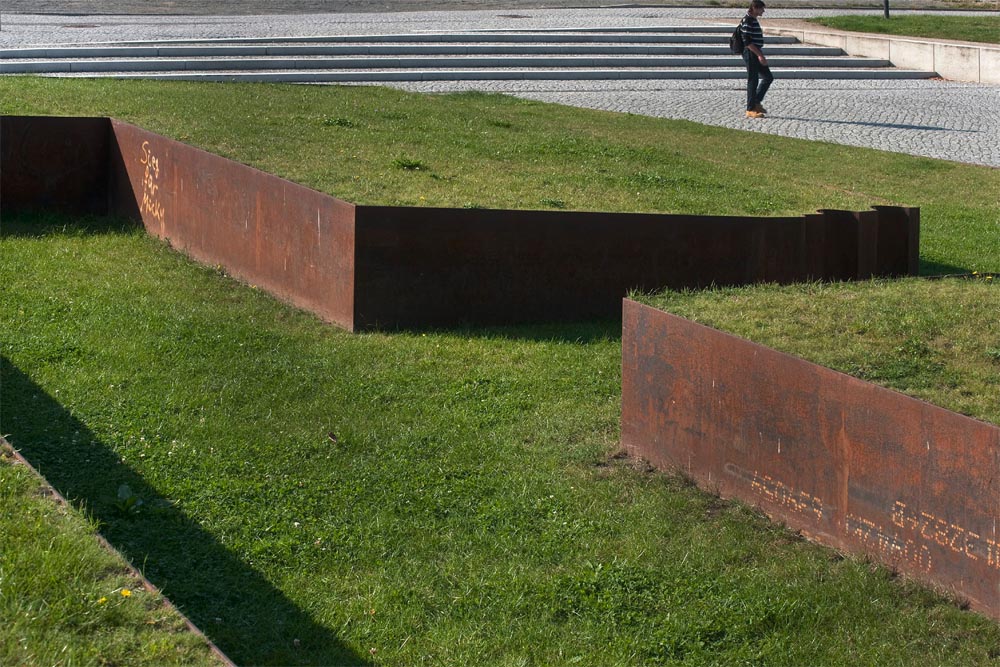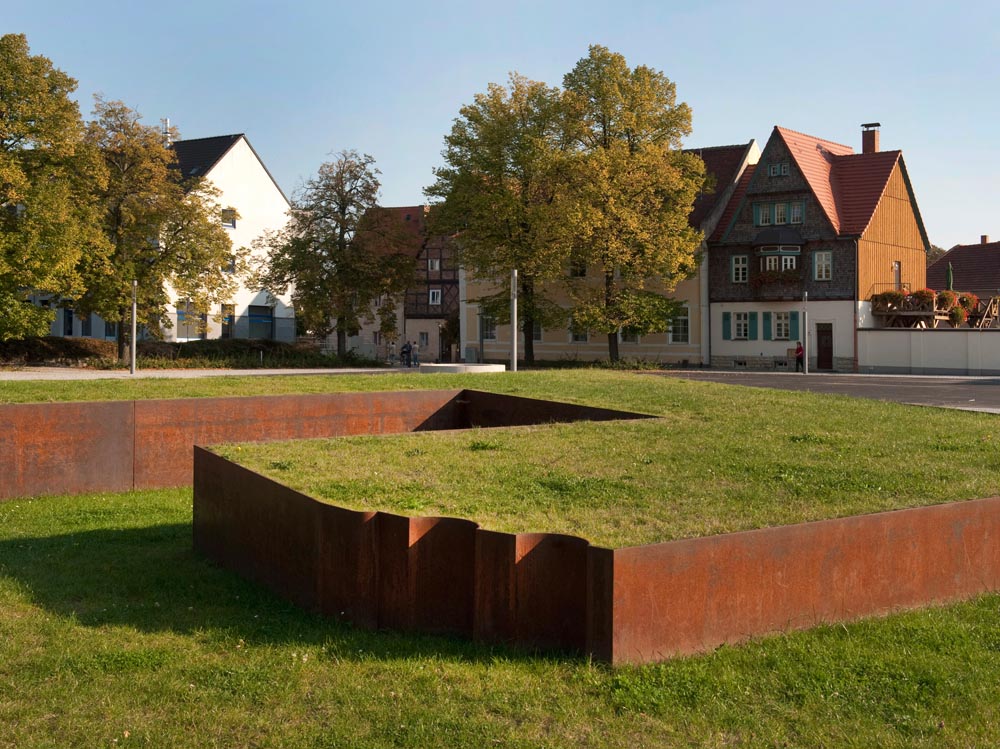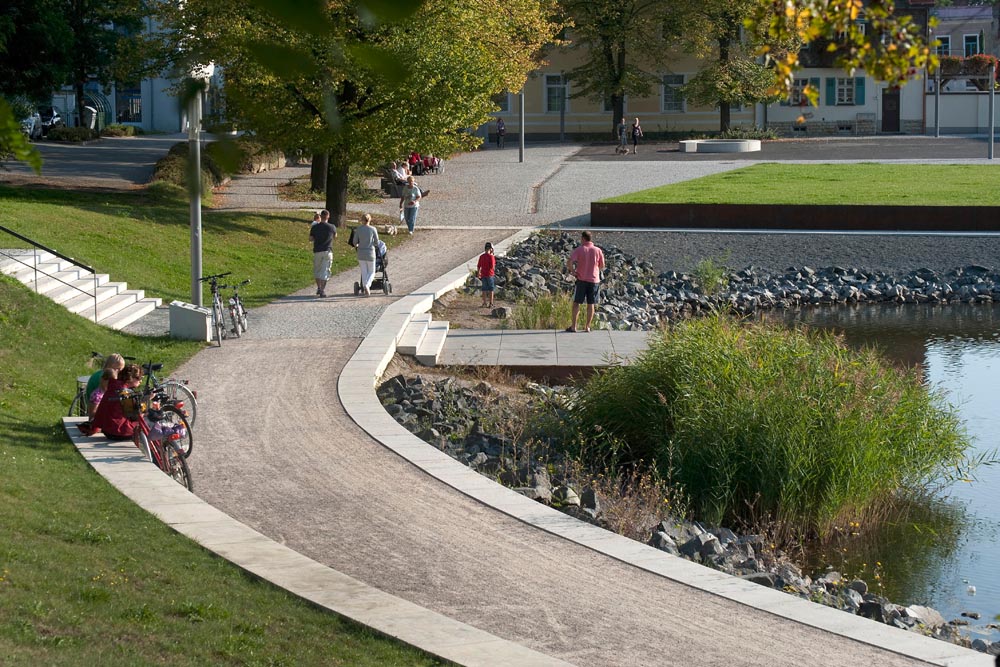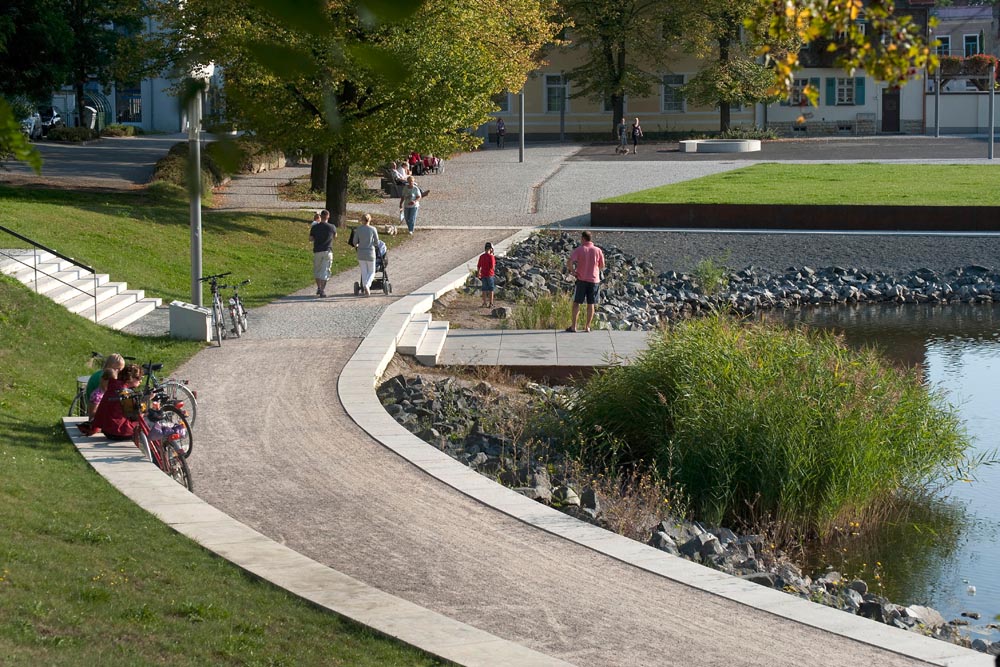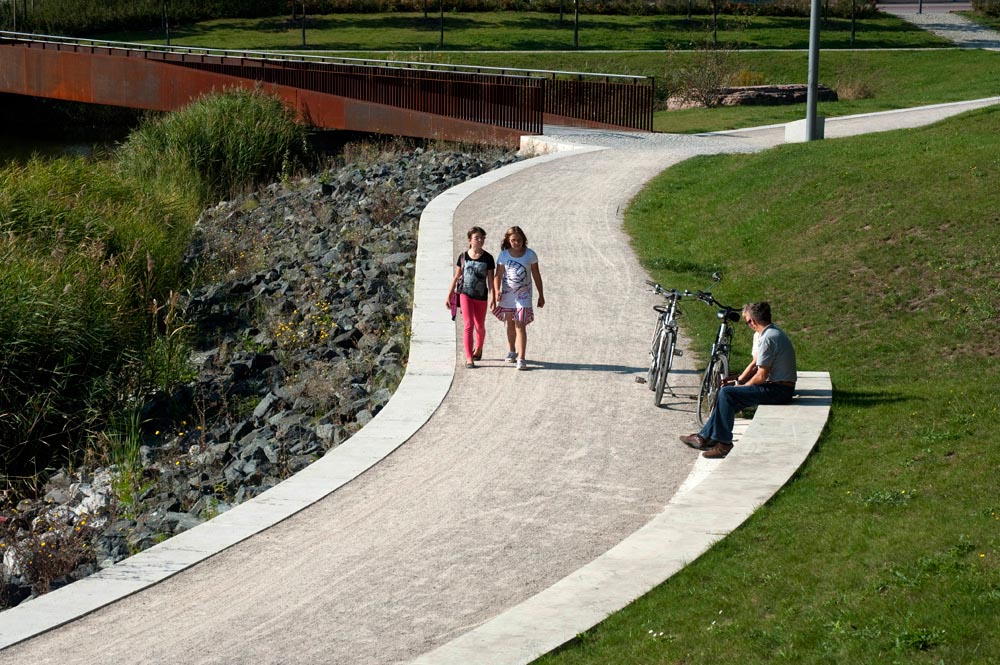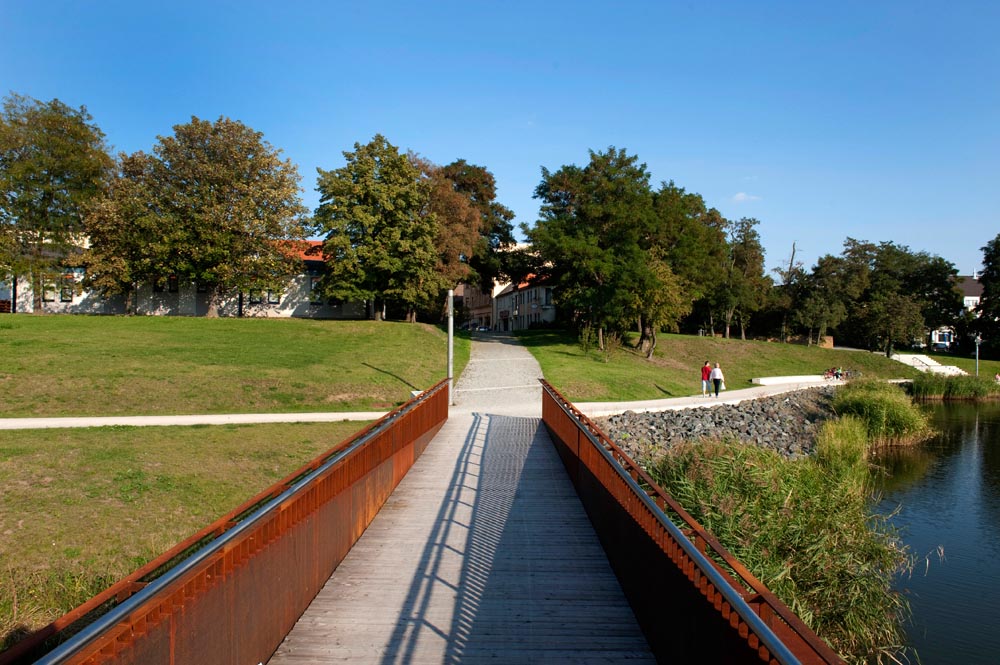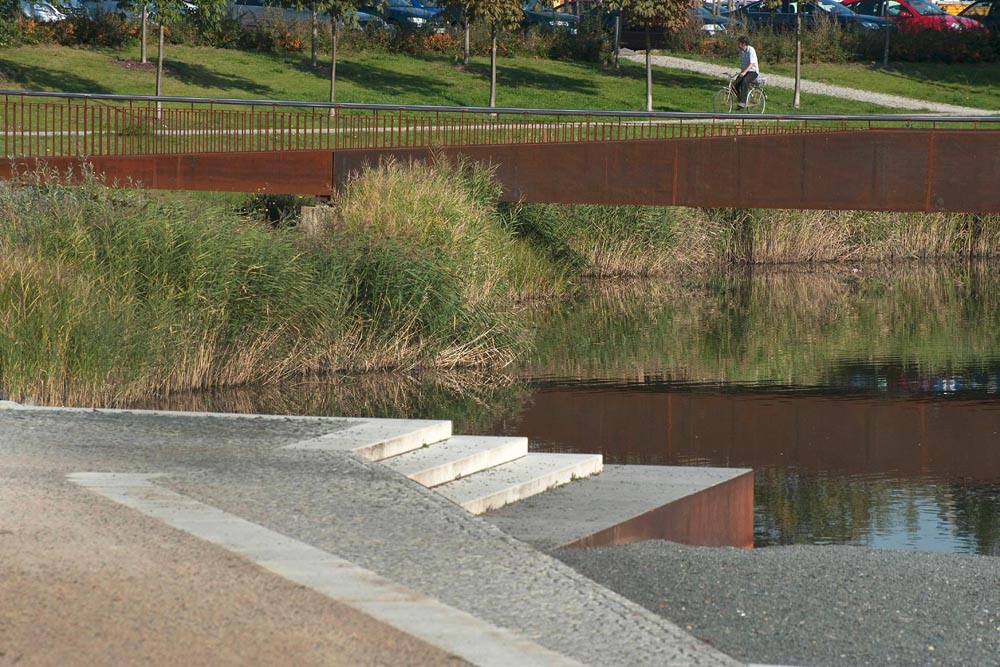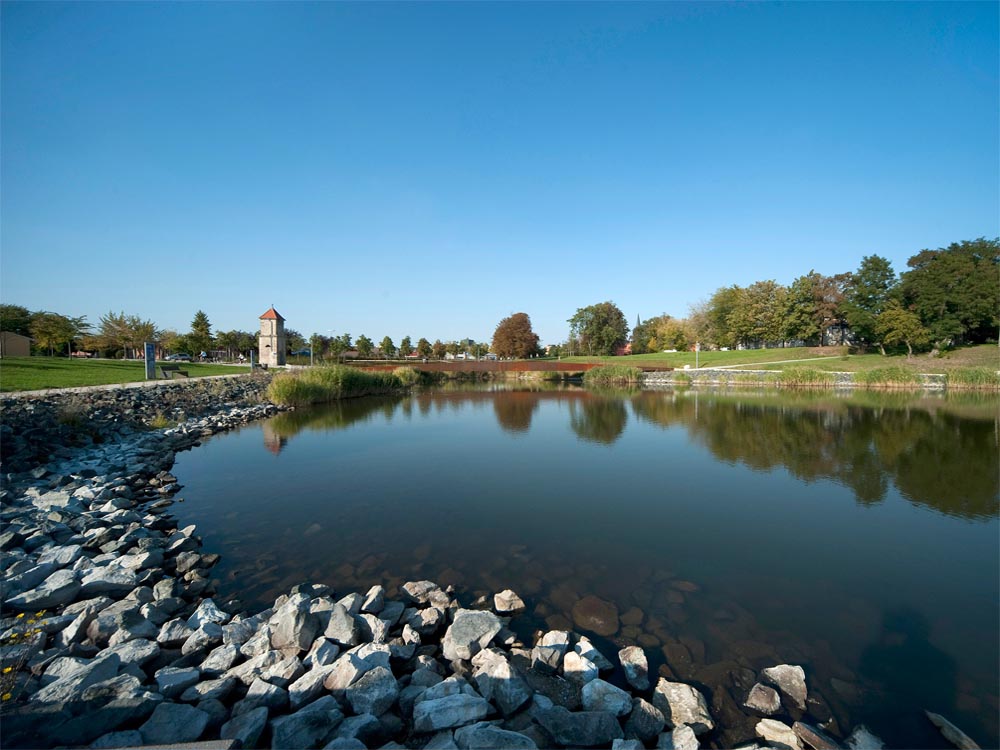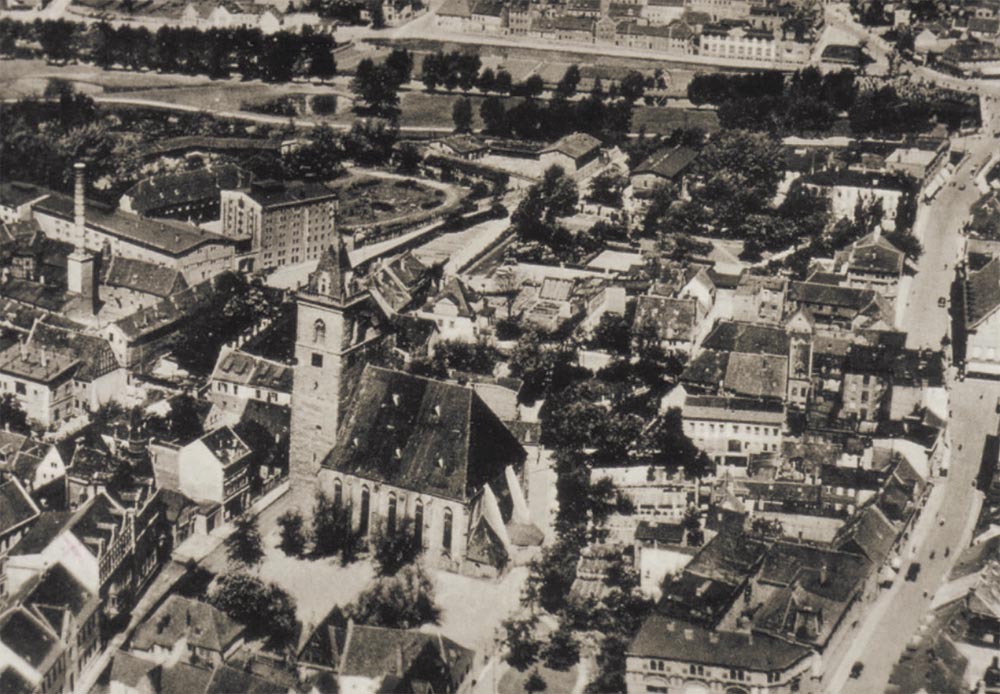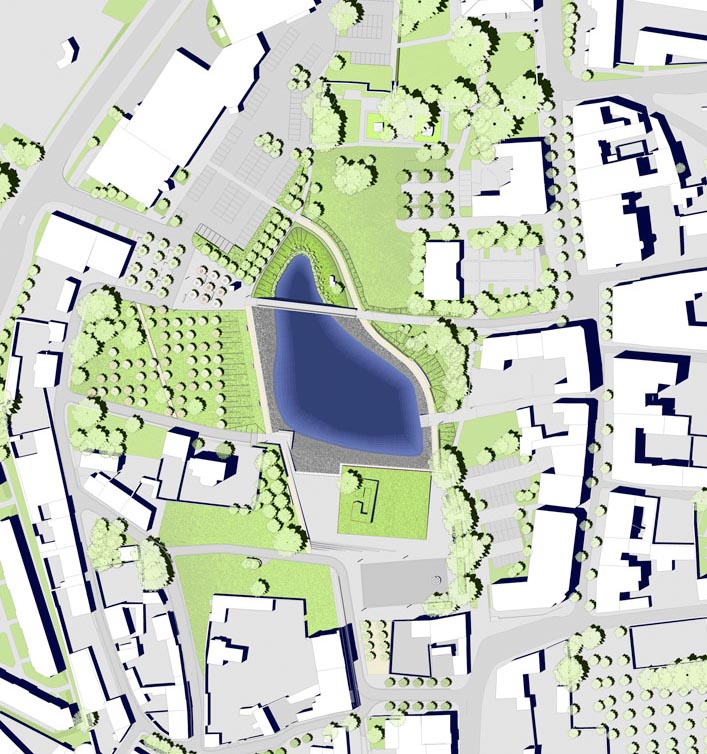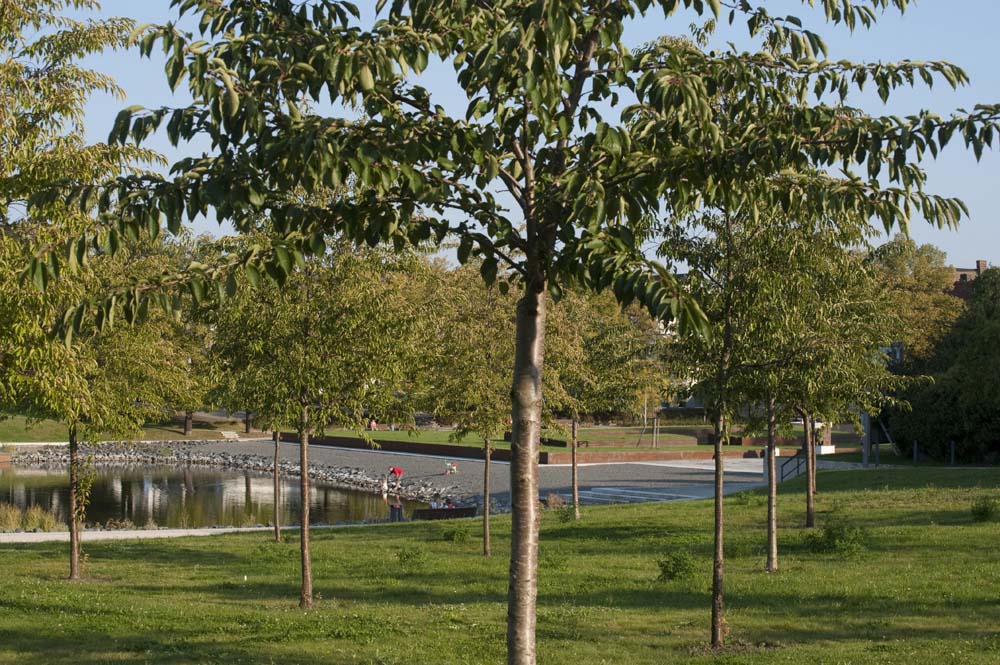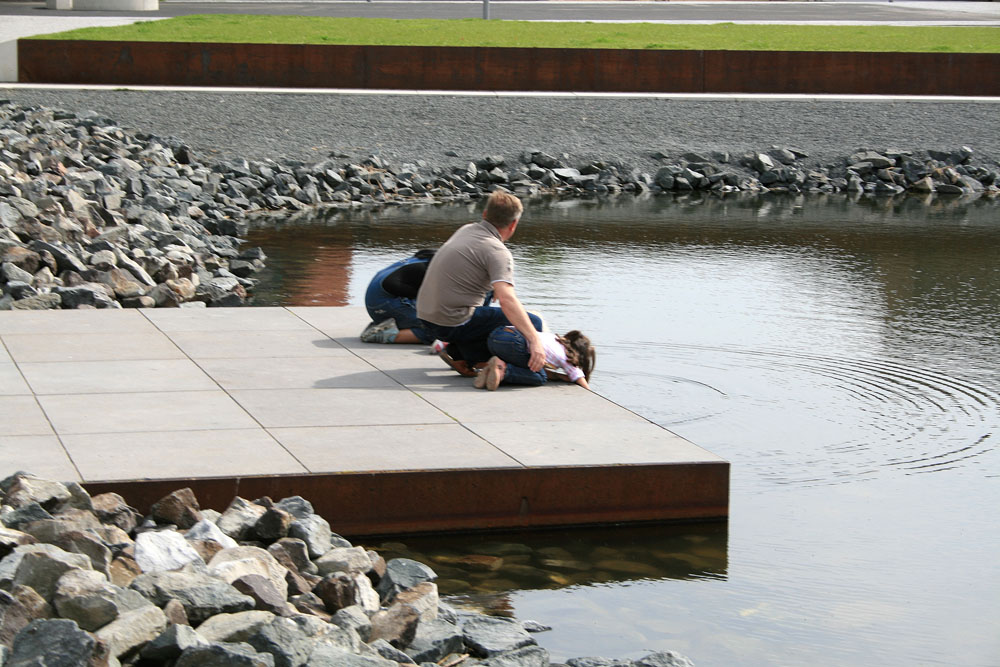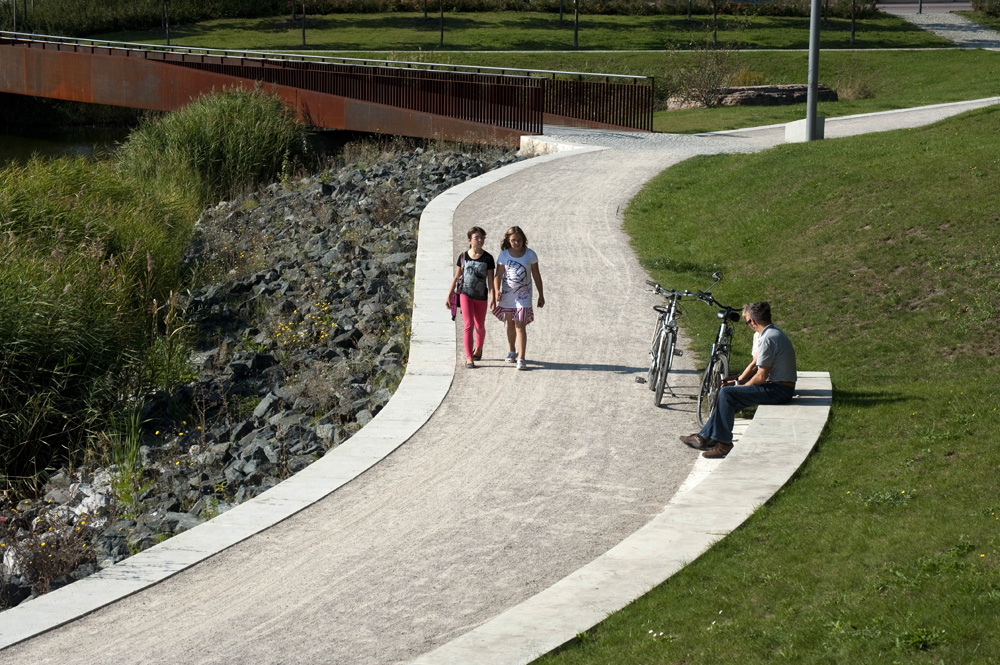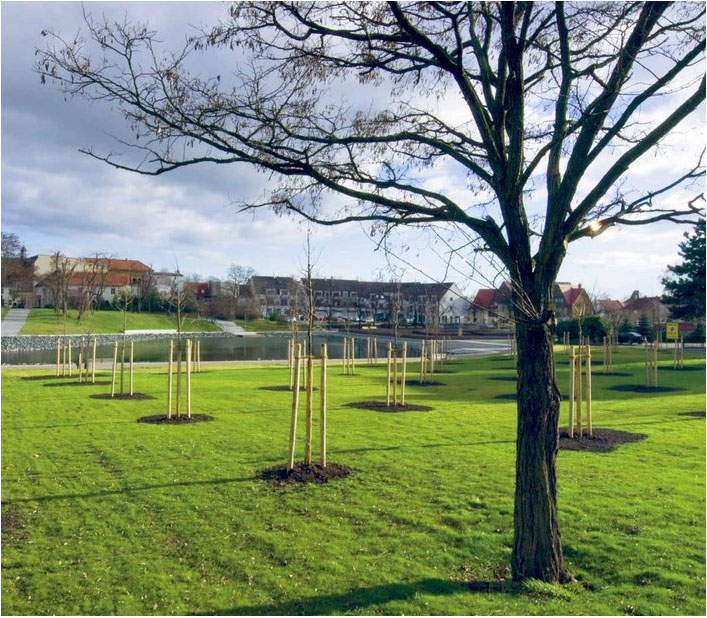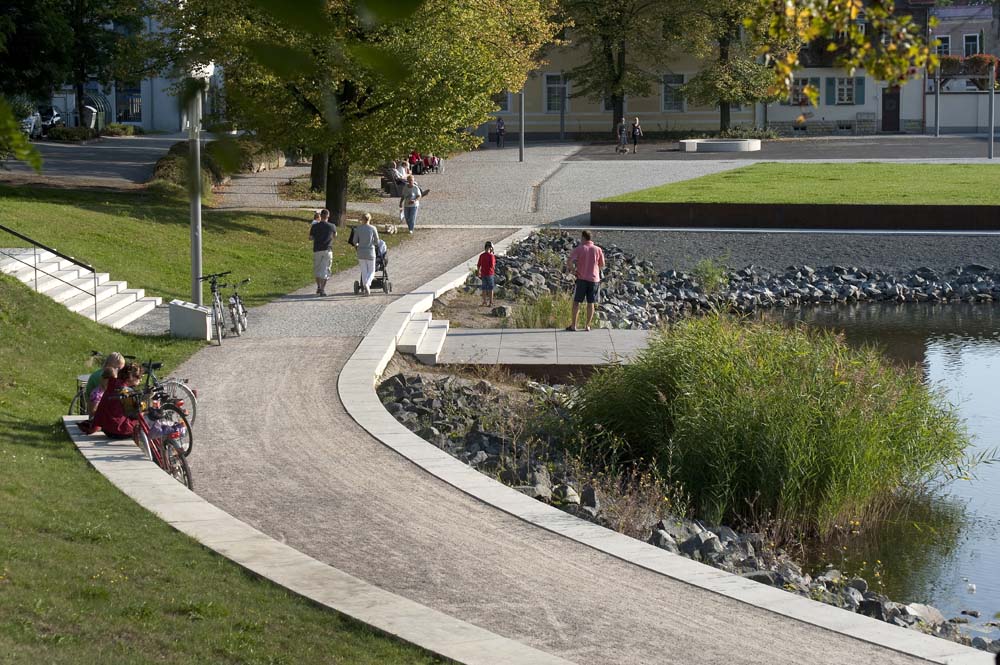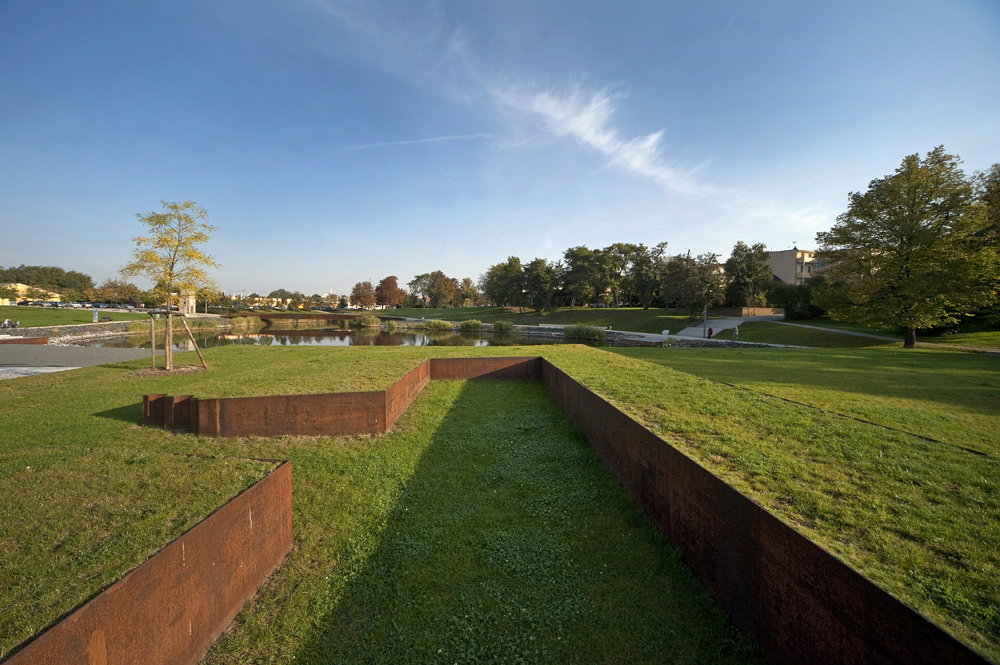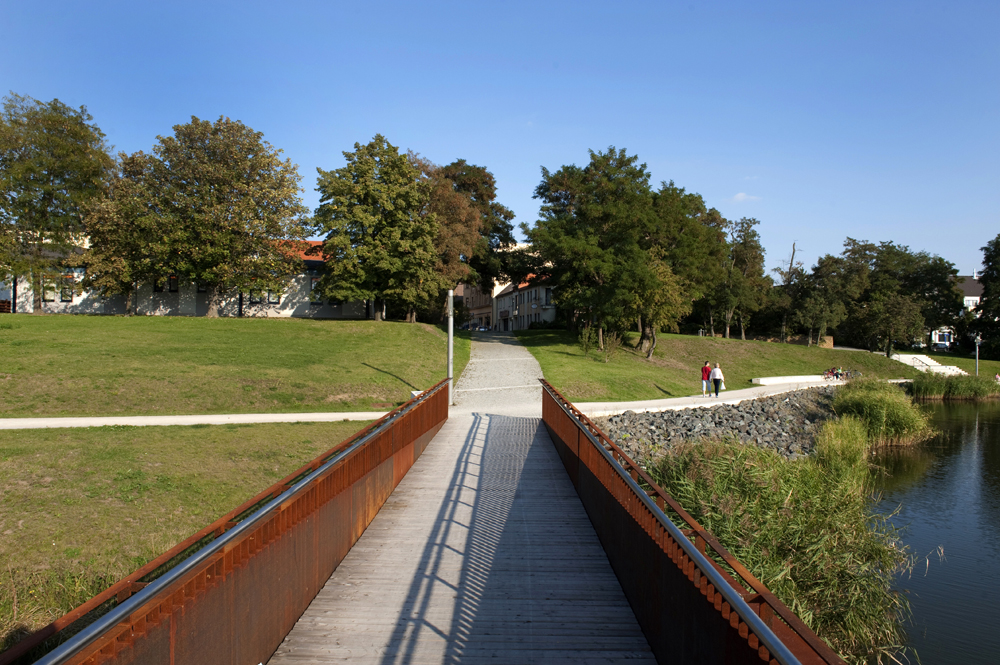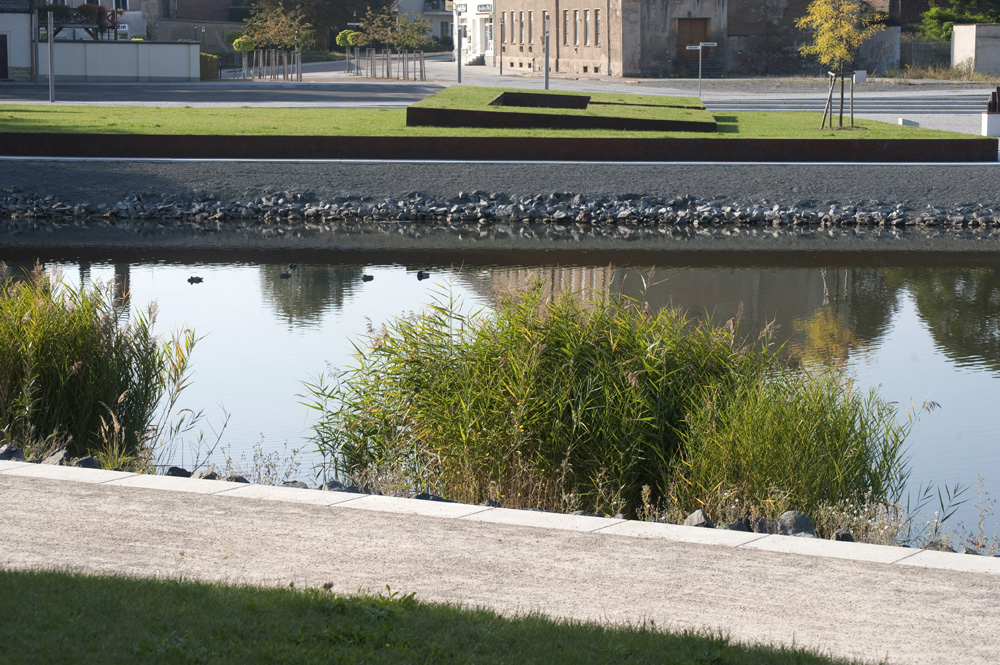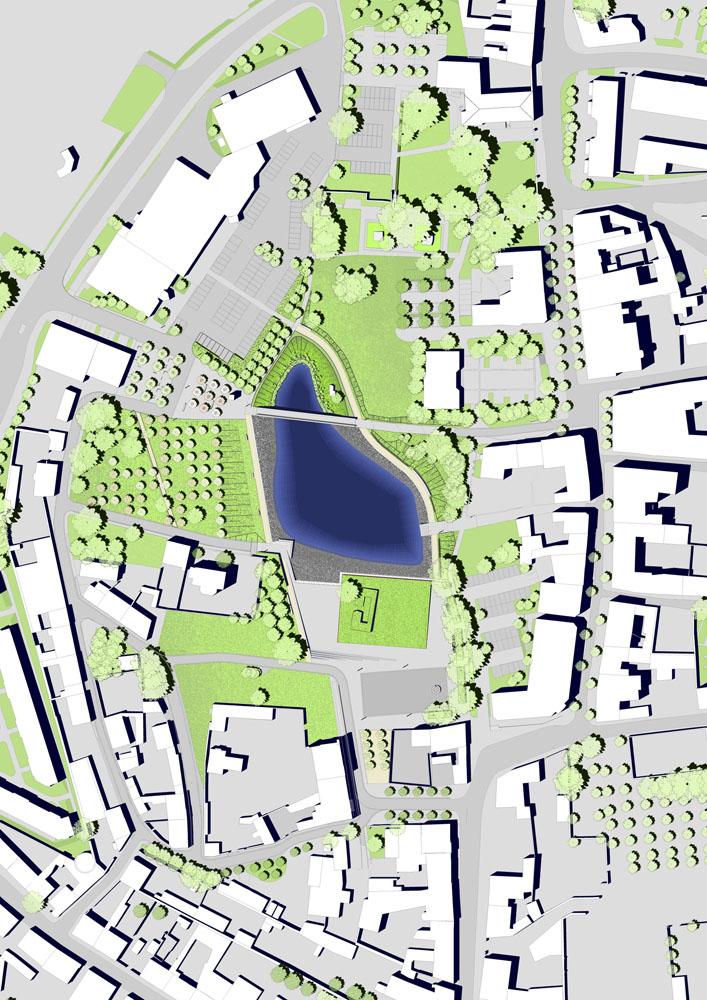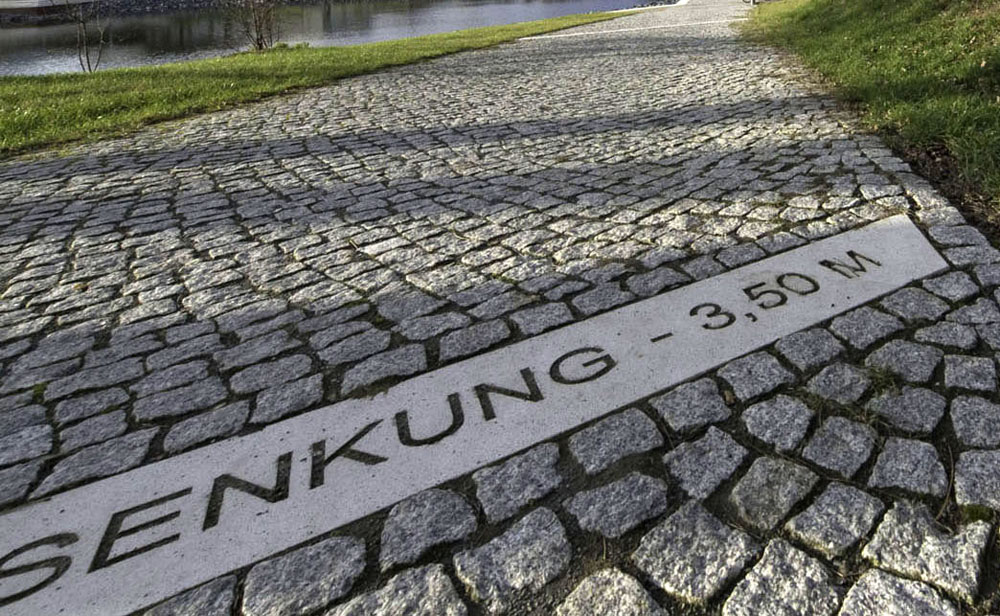Previous state
Staßfurt arised in the Middle Ages by a ford in the River Bode and reached the height of its economic activity in the latter half of the nineteenth century thanks to systematic exploitation of underground salt beds. Once it was discovered that it was possible to process potassium nitrate to obtain, besides gunpowder, potent fertilisers, the town became one of Germany’s main saline producing spots. Far from limiting its activity to the primary extractive sector, the town managed to wrap itself with many chemical plants which produced valuable derivatives from the potash very close to its point of extraction.However, the town was to pay a very high price for this prosperity. Ignorance as to the composition of the subsoil and its groundwater led to errors in drilling which, given the proximity of the river, had tragic consequences. The water flooded the mine shafts, dissolving saline masses and causing the collapse of many subterranean caverns. The town’s medieval centre gradually subsided to the extent that, after some decades, it had dropped more than six metres and was now below the water table. By the 1960s, some eight hundred buildings, including the Town Hall and the church, were so damaged they had to be demolished in order to avoid their sudden collapse.
The area that should have been the heart of Staßfurt was left as a vacant, nondescript space. The instability of the ground and the magnitude of the catastrophe meant that it was not feasible to restore what had been lost. In addition, the mining and chemical industries left the zone and the town lapsed into serious economic and demographic decline. Once the referential and gravitational pull of the old town was gone, the slight subsequent urban growth has been disperse and erratic.
Aim of the intervention
Over the years it has become evident how necessary the survival of an intact and representative historic centre is for the collective sense of identity of the inhabitants of a city or town. Staßfurt, too, needed a unifying and organising urban nucleus around which any future development might revolve. After 2004, the Town Council embarked on a participative process that brought the town’s residents together around a challenge in the form of accepting the physical loss of the old centre but without renouncing the need to preserve it in the collective memory. In brief, something had to be done in order to heal the shocking emptiness that had been left in the old centre.Description
Acceptance of the loss began to take shape in 2005 when the groundwater was allowed to flood part of the cone formed by the subsided ground in order to create a lake. The shores were lined with stone-filled banks in allusion to the salt crystals that once brought so much prosperity and calamity to Staßfurt. A new footbridge acts as the continuation of Kottenstraße, a road that was cut with the appearance of the lake. On the other hand, Marktgasse Alley stops at the water just after forming a stairway that doubles as tiered seating which turns into a small lakeside quay. On the opposite shore, some angled steps indicate the point where the alley would emerge from the water to continue on its way.The lake is circled by a paved path and, on the eastern side, there is a continuous stone bench fitted into the base of a grassy bank. On the south side, the track embraces a rectangular field which, raised a metre and a half above its surrounds, covers the old cemetery and indicates its original level. In the centre of the field, an area delimited by metal sheets, filled with earth and planted with grass, outlines the base of the old bell tower of the church which, famous just before it disappeared for the pronounced angle at which it was leaning, had been the most representative element in Staßfurt’s profile for five centuries. A little further to the south, a rectangular esplanade reveals the former location of the town market. This space is bleak, free of any vegetation and only occupied by a semicircular concrete bench.
On the western shore, a reticular plantation of cherry trees has taken over the private grounds of an abandoned factory until some more specific activity is undertaken in the space. In the north, the so-called Potash Garden surrounds the tower of an old salt mining shaft. At some points, inscriptions in the paving indicate with figures how much the ground surface subsided. The few houses left in the centre after being saved from sinking have been reinforced and renovated. Between the lake and Steinstraße, the main shopping street, which is located to the east, some vacant lots left by previous preventive demolition work are now being used for new constructions. Several vacated buildings have been restored and new commercial activities are now starting to appear.
Assessment
The physical and psychological depression of the medieval town centre have been partially remedied by an emphatic, determined intervention that has enabled Staßfurt to accept its history and raise its head to look towards the future. The old centre is now the former centre, in the form of a representative place that does not restore the past but recognises and remembers it. It does not do so with the paralysing sorrow of a memorial confined to contrition but, rather, with the buoyant optimism of a green zone open to leisure activities and aiming to become a meeting point and an organising nucleus of the town.David Bravo Bordas, architect
[Last update: 02/05/2018]


